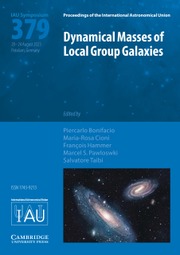No CrossRef data available.
Article contents
The SUNBIRD survey: characterizing the super star cluster populations of intensely star-forming galaxies
Published online by Cambridge University Press: 31 March 2017
Abstract
Super star clusters (SSCs) represent the youngest and most massive form of known gravitationally bound star clusters in the Universe. They are born abundantly in environments that trigger strong and violent star formation. We investigate the properties of these massive SSCs in a sample of 42 nearby starbursts and luminous infrared galaxies. The targets form the sample of the SUperNovae and starBursts in the InfraReD (SUNBIRD) survey that were imaged using near-infrared (NIR) K-band adaptive optics mounted on the Gemini/NIRI and the VLT/NaCo instruments. Results from i) the fitted power-laws to the SSC K-band luminosity functions, ii) the NIR brightest star cluster magnitude − star formation rate (SFR) relation and iii) the star cluster age and mass distributions have shown the importance of studying SSC host galaxies with high SFR levels to determine the role of the galactic environments in the star cluster formation, evolution and disruption mechanisms.
Keywords
- Type
- Contributed Papers
- Information
- Proceedings of the International Astronomical Union , Volume 12 , Symposium S316: Formation, evolution, and survival of massive star clusters , August 2015 , pp. 70 - 76
- Copyright
- Copyright © International Astronomical Union 2017


